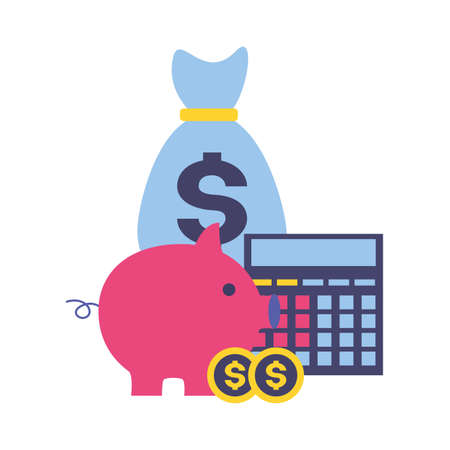1. Understanding the Basics of 401(k) Plans
What Is a 401(k)?
A 401(k) is a retirement savings plan offered by many U.S. employers that lets employees save and invest a portion of their paycheck before taxes are taken out. The funds in your 401(k) grow tax-deferred until you withdraw them in retirement, making it a powerful tool for building your nest egg over time.
Who Is Eligible?
Most full-time and part-time employees are eligible to participate in their employers 401(k) plan, but eligibility requirements can vary. Some plans require you to be at least 21 years old or have worked with the company for a specific period—often one year—before you can start contributing.
Contribution Limits for 2024
The IRS sets annual contribution limits for 401(k) accounts. Here’s a quick look at the current numbers:
| Contribution Type | 2024 Limit |
|---|---|
| Employee Contribution | $23,000 |
| Catcher-Up (Age 50+) | Additional $7,500 |
| Total (Employee + Employer) | $69,000 (or $76,500 if age 50+) |
Traditional vs. Roth 401(k): What’s the Difference?
There are two main types of 401(k) accounts: traditional and Roth. Each offers different tax advantages:
| Feature | Traditional 401(k) | Roth 401(k) |
|---|---|---|
| Contributions | Pre-tax dollars (reduces taxable income now) | After-tax dollars (no immediate tax benefit) |
| Taxes on Withdrawals | Pays taxes upon withdrawal during retirement | No taxes on qualified withdrawals in retirement |
| Best For | Those expecting to be in a lower tax bracket in retirement | Those expecting to be in a higher tax bracket later on |
Why Participate?
Many employers offer matching contributions, which means they add extra money to your account based on how much you contribute. This is essentially free money that helps you build your retirement savings even faster.
2. Tax Advantages of 401(k) Contributions
Understanding Pre-Tax Benefits
One of the biggest perks of a traditional 401(k) is that your contributions are made with pre-tax dollars. This means money goes into your retirement account before federal income taxes are taken out, which can lower your taxable income for the year. For example, if you make $60,000 and contribute $6,000 to your 401(k), the IRS only taxes you on $54,000 of income.
| Annual Salary | 401(k) Contribution | Taxable Income |
|---|---|---|
| $60,000 | $6,000 | $54,000 |
| $80,000 | $8,000 | $72,000 |
Benefit From Tax-Deferred Growth
Your investments inside a 401(k) grow tax-deferred, meaning you don’t pay taxes on any dividends, interest, or capital gains each year. Instead, you’ll pay taxes when you withdraw the money in retirement. This helps your money compound faster over time since more of it stays invested and working for you.
How Tax Deferral Works:
- You contribute pre-tax dollars today.
- Your investments grow without yearly tax deductions.
- You pay ordinary income tax only when you take withdrawals after age 59½.
Lower Your Tax Bill Today—Save for Tomorrow
By contributing to your 401(k), you reduce your current taxable income and potentially move into a lower tax bracket. This can mean paying less in federal and state taxes now, while also building a nest egg for retirement. Remember, the more you contribute (up to annual IRS limits), the bigger the immediate tax benefit.

3. Smart Contribution Strategies for Every Life Stage
Maximize Employer Matching: Don’t Leave Free Money on the Table
One of the simplest ways to boost your 401(k) savings is to contribute enough to get your full employer match. Most U.S. employers offer a match—often dollar-for-dollar up to a certain percentage of your salary (like 3% or 5%). If you don’t contribute at least that amount, you’re passing up free money. Here’s how different scenarios can look:
| Annual Salary | Employer Match Rate | Your Min. Contribution | Free Money from Employer |
|---|---|---|---|
| $50,000 | 100% up to 4% | $2,000 | $2,000 |
| $70,000 | 50% up to 6% | $4,200 | $2,100 |
| $90,000 | 100% up to 3% | $2,700 | $2,700 |
Make sure you know your plan’s details and set your contributions so you get the maximum employer match every year.
The Power of Automatic Escalation
If increasing your contribution all at once feels tough, automatic escalation can help. Many 401(k) plans let you schedule annual increases (for example, boosting your savings rate by 1% each year). This gradual approach makes it easier to save more as you earn more—without feeling the pinch in your paycheck.
How Automatic Escalation Works:
- You start with a manageable contribution rate (e.g., 6%)
- Your rate automatically increases by a set amount each year (e.g., +1%)
- This continues until you reach your target or the plan’s cap (often 10%-15%)
Check if your company offers this feature—it’s a great way to grow your retirement nest egg painlessly.
Catching Up After Age 50: Supercharge Your Savings
If you’re age 50 or older, IRS rules let you make “catch-up” contributions above the regular annual limit. In 2024, you can contribute an extra $7,500 on top of the standard $23,000 limit. This is perfect if you got a late start or want to maximize tax-advantaged growth as retirement nears.
| Age Group | Standard Limit (2024) | Catch-Up Allowed? | Total Possible Contribution |
|---|---|---|---|
| Under 50 | $23,000 | No | $23,000 |
| 50 and Over | $23,000 | Yes (+$7,500) | $30,500 |
To take advantage, just update your payroll deduction or talk with HR about increasing your contributions once you turn 50.
Adjusting Contributions During Career Changes
Your career path might not always be a straight line—job changes, promotions, or career breaks happen. Each time your income changes or you switch jobs:
- Review and adjust your contribution rate—make sure you’re still getting any available match in a new plan.
- If there’s a gap between jobs, consider rolling over old 401(k)s into one account to simplify management and keep investments growing tax-deferred.
- If starting a new job with a waiting period for benefits, try contributing to an IRA in the meantime so you don’t lose momentum.
- If income goes up after a raise or new job, bump up your savings rate—it’s easier before lifestyle inflation kicks in!
The key is to revisit your savings strategy whenever life shifts. Small tweaks along the way will keep you on track for a financially secure retirement.
4. Investment Allocation and Diversification
When it comes to maximizing your 401(k), understanding how to allocate and diversify your investments is crucial. The right mix can help you grow your retirement savings while managing risk, and ensuring your portfolio matches your long-term goals.
Choosing Your 401(k) Investment Options
Most 401(k) plans offer a variety of investment choices, including stocks (equities), bonds (fixed income), and sometimes stable value or money market funds. It’s important to select a combination that fits your age, risk tolerance, and retirement timeline.
| Asset Type | Potential Growth | Risk Level | Best For |
|---|---|---|---|
| Stocks/Equities | High | Higher | Younger investors with a long time until retirement |
| Bonds/Fixed Income | Moderate | Lower than stocks | Investors closer to retirement seeking stability |
| Stable Value/Money Market Funds | Low | Lowest | Those prioritizing preservation of capital over growth |
Understanding Target-Date Funds
If picking individual investments seems overwhelming, target-date funds can be a great solution. These are mutual funds designed to automatically adjust their asset mix as you approach your planned retirement year. For example, a “2050 Target-Date Fund” will invest more aggressively now, then gradually shift toward bonds and cash as 2050 nears. This helps take the guesswork out of rebalancing for many savers.
The Benefits of Target-Date Funds:
- Simplifies investment decisions by offering a one-stop fund solution
- Automatically rebalances as you get closer to retirement age
- Diversifies across stocks, bonds, and sometimes other assets within a single fund
Why Rebalancing Matters
Your investment allocation will naturally shift over time as markets go up and down. If left unchecked, you might end up taking on more risk than intended or missing out on growth opportunities. Regularly rebalancing—usually once or twice a year—means adjusting your investments back to your original target allocation. Many 401(k) plans offer automatic rebalancing features, so check if this option is available to keep your portfolio aligned with your goals without extra effort.
5. Minimizing Taxes on Withdrawals in Retirement
Understanding the Basics of 401(k) Withdrawals
When you start taking money out of your 401(k) in retirement, those withdrawals are usually taxed as ordinary income. Planning ahead can help you keep more of your hard-earned savings and avoid unnecessary taxes.
Best Practices for Withdrawing Funds
The order in which you withdraw from different accounts matters. Many retirees have a mix of traditional 401(k)s, Roth IRAs, and taxable brokerage accounts. Here’s a general rule of thumb:
| Account Type | Tax Impact | Recommended Withdrawal Order |
|---|---|---|
| Taxable Brokerage Account | Capital gains tax (often lower than income tax) | First |
| Traditional 401(k) / IRA | Ordinary income tax | After taxable accounts, but before Roth accounts |
| Roth 401(k)/IRA | No tax on qualified withdrawals | Last (let these grow tax-free as long as possible) |
Tip:
If you need extra cash for a big purchase or emergency, consider the tax impact before choosing which account to tap.
Navigating Required Minimum Distributions (RMDs)
The IRS requires you to start taking RMDs from your traditional 401(k) and traditional IRAs once you turn age 73 (if you reach age 72 after January 1, 2023). The amount is based on your account balance and life expectancy. If you don’t take your RMDs, you could face a hefty penalty—up to 25% of the amount you should have withdrawn.
- Plan ahead: Mark your calendar for your first RMD year and consider spreading withdrawals throughout the year instead of waiting until December.
- Avoid the penalty: Make sure to withdraw at least the minimum required each year.
The Impact of Roth Conversions
A Roth conversion means moving money from a traditional 401(k) or IRA into a Roth account. You’ll pay taxes on the converted amount now, but future withdrawals will be tax-free (as long as certain conditions are met).
- Why consider it? Converting during years when your income—and therefore your tax rate—is lower can reduce your overall lifetime taxes.
- Avoiding large RMDs: Money in a Roth IRA is not subject to RMDs during your lifetime, giving you more control over your withdrawals.
- Watch out: Large conversions can bump you into a higher tax bracket, so work with a financial advisor or use online calculators to run the numbers.
Example: Comparing Traditional vs. Roth Withdrawal Taxes
| Traditional 401(k) | Roth 401(k)/IRA | |
|---|---|---|
| Withdrawals Taxed? | Yes (ordinary income) | No (if qualified) |
| RMD Required? | Yes (age 73+) | No for Roth IRAs; Yes for Roth 401(k) unless rolled over to Roth IRA |
Strategies to Minimize Tax Impact During Retirement
- Diversify account types: Having both pre-tax and Roth accounts gives flexibility to manage your taxable income each year.
- Bunch deductions: If making charitable donations, consider doing them in years when you have higher taxable income or use Qualified Charitable Distributions (QCDs) directly from an IRA after age 70½.
- Taper withdrawals: Withdraw enough each year to stay within a lower tax bracket while covering your needs. Avoid withdrawing too much in one year that would push you into a higher bracket.
- Delay Social Security: If possible, delaying Social Security benefits can reduce your taxable income early in retirement while letting those benefits grow larger for later years.
By understanding how different withdrawal strategies affect your taxes, you can make smarter decisions that help maximize your retirement savings and minimize what goes to Uncle Sam.


